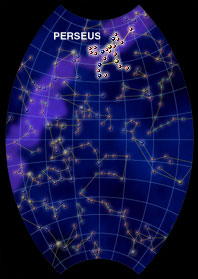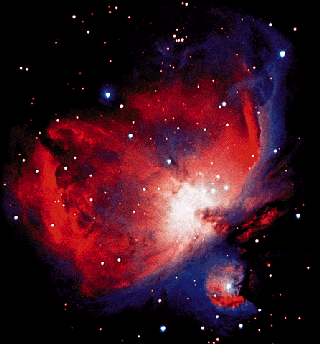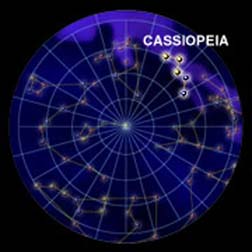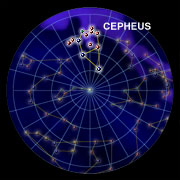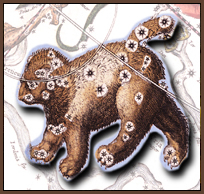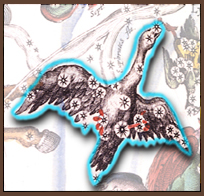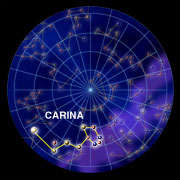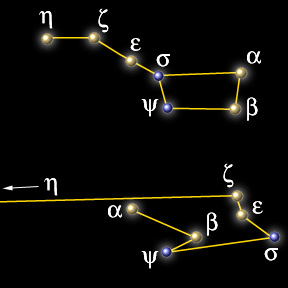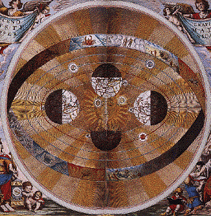Click on image for full size
Courtesy of NASA
Related links:
Perseus
Perseus, the Hero, can be found in the sky during the winter in the Northern Hemisphere. With a little imagination, you can see the image of a man in the stars. He has a sort of triangular body, with two legs and feet that look like they are curling up towards the head. There are also two arms stretching out, possibly carrying some sort of weapon or the head of Medusa.
Perseus was a Greek hero most famous for his slaying of Medusa. If anyone looked at Medusa's face they would turn to stone. With the help of Hermes' wings and Athena's shield, Perseus killed Medusa without looking at her. On his way home, Perseus came across the monster, Cetus, getting ready to eat Andromeda. Perseus used Medusa's head to turn Cetus into stone and saved the princess.
Algol is a very famous star in Perseus. When looking at the image, Algol is the white "star" in the right leg. In Arabic, the name means "head of the demon", which makes many scientists believe the star was supposed to represent Medusa's eye. What makes this star so special is that it winks! Algol is a special type of binary star, with a dimmer star revolving around a brighter star. When the dimmer star crosses in front of the other, the magnitude of Algol decreases, giving the appearance of a winking star! This occurs every 2.87 days.
Perseus is located along the Milky Way, so it is full of deep sky objects. M34 is an open cluster located northeast of Algol. The famous Double Cluster consists of clusters NGC 869 and NGC 884. With a small telescope, you can see that the fuzzy patch is actually two separate systems. The Double Cluster is located just northeast of the head.
There are many more clusters to see, along with a few nebulae. A very faint galaxy, NGC 1023, is located near Algol. When you find Perseus, look for the constellations Cassiopeia, Cepheus and Andromeda!


